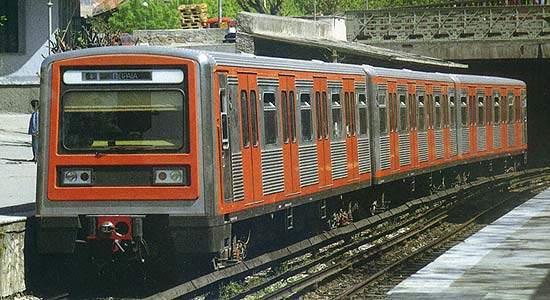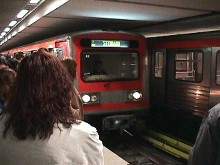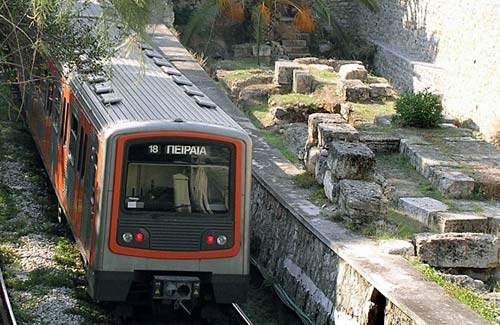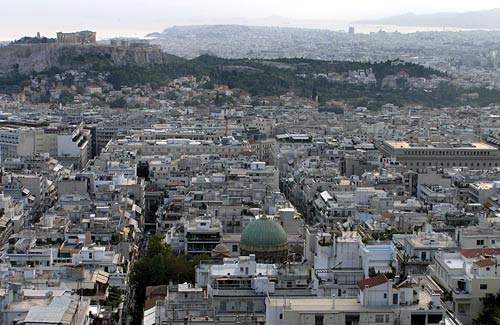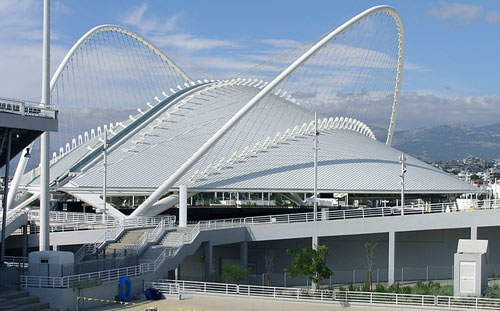The Athens Metro in Greece is formed of an enlarged and upgraded suburban rail route, as well as two newer lines.
In 1869, a metropolitan railway was built to link Athens and Piraeus, the country’s largest port, south-west of the capital. It was later electrified and extended north-east to Kifissia. It was to become designated the Metro Line 1, colour-coded green.
Construction for the new metro lines, one of Greece’s largest modern civil engineering projects, began in 1991. It was promoted as a response to intense traffic congestion and related pollution that were becoming an unwelcome part of the city’s identity. Metro Lines 2 (red) and 3 (blue) opened in January 2000.
History of the Athens Metro project
In an effort to solve its traffic problems, the Greek Government turned to the EU for financial help. In 1991, a turnkey contract for the construction was awarded to the Olympic Metro Consortium, comprising 23 German, French and Greek companies.
The contract allows the consortium partners to recoup their investment during the term of their operating licence. The metro and other public transport modes, notably a new tram system, also benefitted greatly from Athens hosting the Olympic Games in 2004.
Lines and routes
Line 1 (Green) is owned and operated by Athens-Piraeus Electric Railways. It runs 25.6km from Piraeus to Kifissia via Athens, and conveys 450,000 passengers a day.
Line 2 runs 10.9km from Peristeri to Vouliagmenis Avenue. Line 3 runs 16.4km between Egaleo and Athens International Airport. Between Doukissis Plakentias and the airport, the metro shares track with OSE services.
Lines 2 and 3 are operated by Attiko Metro Operations Company and carry 650,000 passengers daily.
Infrastructure
All lines are standard gauge and use a third rail power supply. Line 1 stations were upgraded or completely rebuilt in time for the 2004 Olympics, with Eirini station the main public transport link to the main Olympic complex.
Nearby Neratziotissa is the interchange for the suburban railway into Larissa, the main OSE station, and the airport. End-to-end timing is 51 minutes, with headways varying according to demand, from 2.5 to 15 minutes.
The sensitive nature of much of Athens’ historic city meant that Lines 2 and 3 were built underground. Tunnel boring machines were used for much of the construction. The excavation work unearthed many archaeological treasures: some are showcased in the stations, while others have become attractions in their own right.
All platforms are 110m-long. A maintenance depot for new rolling stock is located at Sepolia (Line 2) while a second is located at Eleonas (Line 3).
The three lines interconnect at the centrally located stations of Monastiraki, Omonoia and Syntagma, the latter also being the city centre tram terminus. There are extensive bus services, with all modes and interchanges shown on maps of the co-ordinating Athens Urban Transport Organisation.
Rolling stock
Initial stocks were relatively basic and followed an older styling in comparison to most equivalent vehicles elsewhere. New three-car trains were specified with high-density interiors, capable of accommodating more than 1,000 passengers under crush-loading conditions. Dual voltage ROTEM-supplied stock with greater luggage space is used for services on the section to the airport, where it runs under 25kV wires with the suburban railway. Rolling stock has been acquired in several batches, sourced variously from France, East Germany, Germany and Korea.
A total of 17 air-conditioned EMU-6 trains purchased from Hanwa-Rotem are the latest addition to the rolling stock.
Signalling and communications
All the trains are fitted with an automatic control system, which controls headways between them, as well as the speed of each individual train.
Ticketing systems and stations access are also fully automated. A coloured light system governs train movement along track sections and in all the tunnels. Passenger information is provided on trains and station platforms.
The future
The latest and future developments of Athens Metro include extension of Lines 2 and 3 and tramway, and construction of a new Line 4.
Comprising seven stations, a 5.5km extension of Line 2 (Ilioupoli- Alimos – Argyroupoli – Elliniko) was completed in September 2012. The line was handed over in July 2013, upon the installation of signaling systems. The extension line 2 has a capacity of 83,000 and a travel time of 14 minutes from Syntagma to Elliniko.
The Line 3 extension will run from Ag. Marina (earlier Haidari) to Piraeus and will connect Piraeus port to Eleftherios Venizelos international airport. It will serve 135,000 passengers a day and cut travel time by an hour. The 50km long Line 3 extension will have 27 stations at Maniatika, Nikaia, Piraeus, Korydallos, Dimotiko Theatro and Aghia Varvara. It is expected to be completed in 2020.
Construction on the tramway extension (N. Faliro – centre – Piraeus port) commenced in April 2014 and is expected to be completed in the second half of 2018. The 5.4km-long extension will have 12 stops and serve 35,000 passengers a day. The €50m ($68m) extension planned in Piraeus will start from ISAP station and end at Piraeus port.
Athens Metro will also have a new Line 4, which will be 33km long with 29 stations. Construction on the new line is scheduled to begin in 2019.
ATTIKO METRO and the Ministry of Development, Competitiveness, Infrastructures, Transport and Networks are planning for other tramway extension projects on the Athens Metro, which include Stage B extension to Kallipoli, stage C extension to Keratsini and Perama, extension to Argyroupoli, and an extension from Syntagma to Egyptou Square.
Contractors
Atiko Metro awarded a €344m ($469m) supply contract for the Line 3 extension to a consortium consisting of Alstom, J&P Avax and Ghella in March 2012. With a €32m ($43.6m) share in the contract, Alstom is in charge of design and installation of traction power, supply of medium-voltage and low-voltage distribution, as well as third rail.
In April 2012, Siemens was selected to supply signalling systems to Lines 2 and 3 extensions of the Athens Metro. The €41m ($55.9m) contract consists of delivery, installation and commissioning of LZB 705M automatic train control systems, Vicos 111 operations control system and Sicas electronic interlocking. The first phase of the contract was expected to start in late 2013.
THEMELI signed a €61.5m ($83.8m) contract with Atiko Metro in January 2013 to construct the tramway extension.

